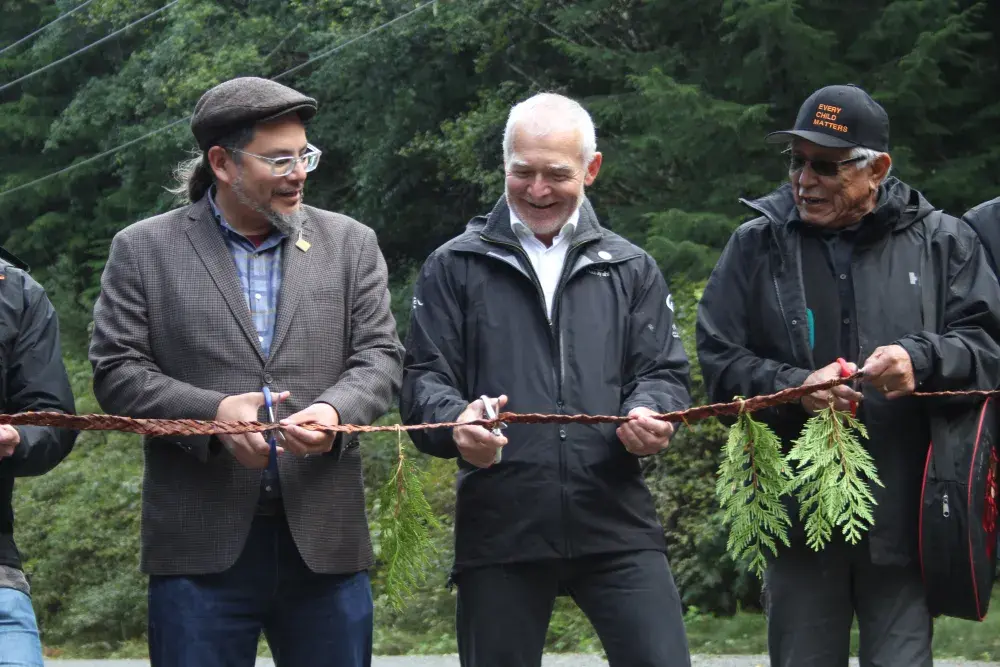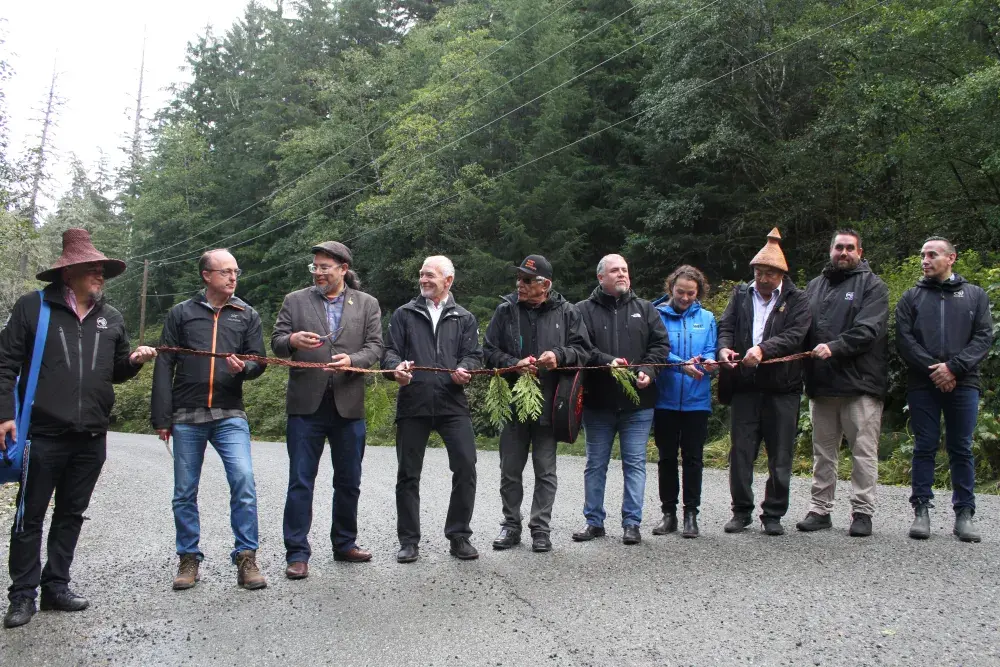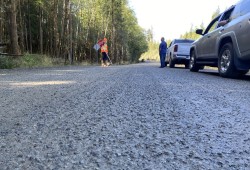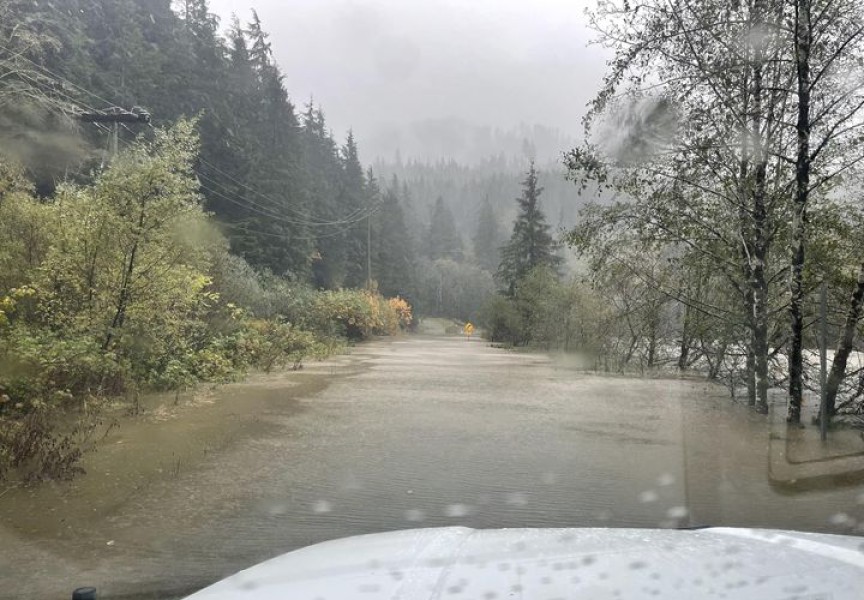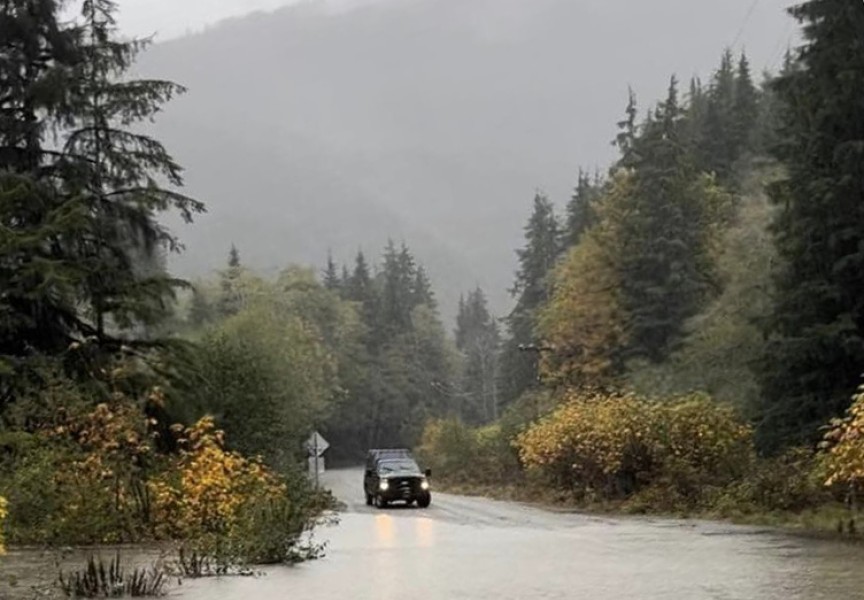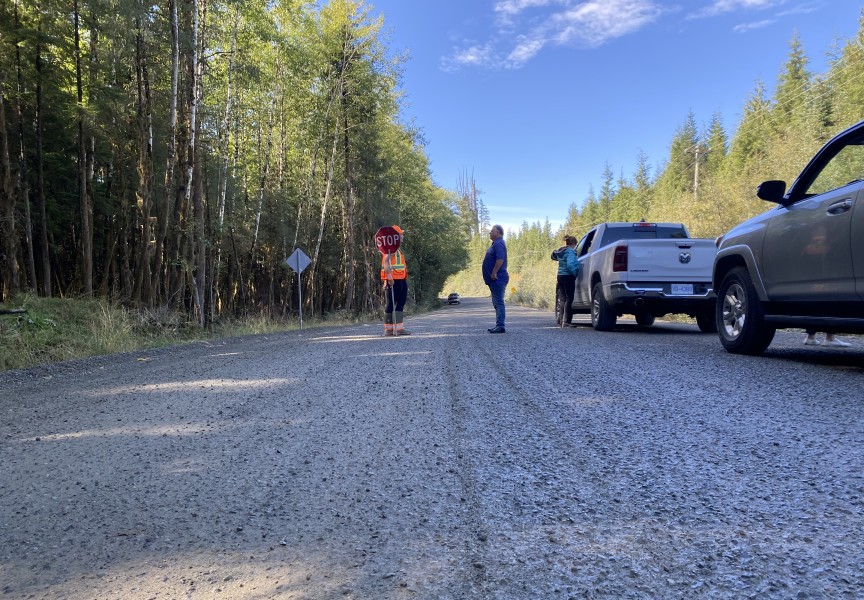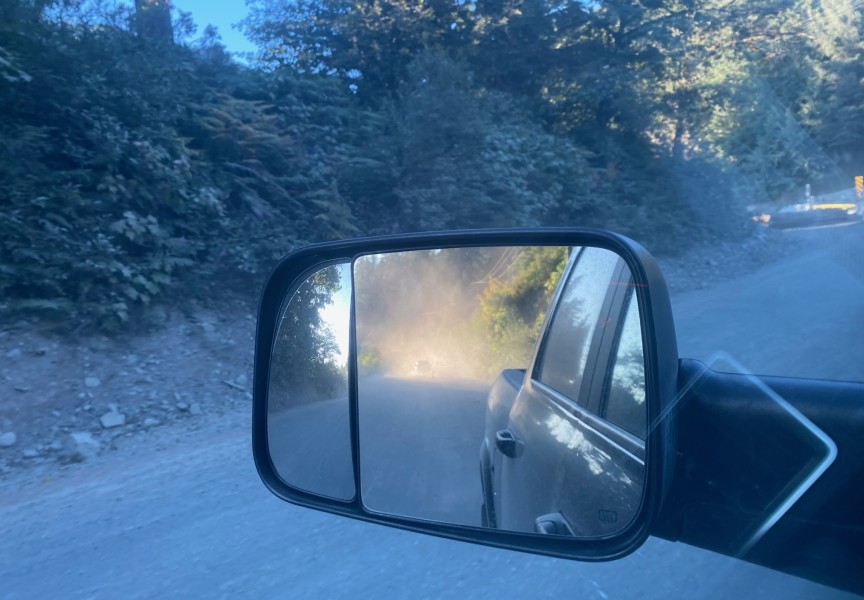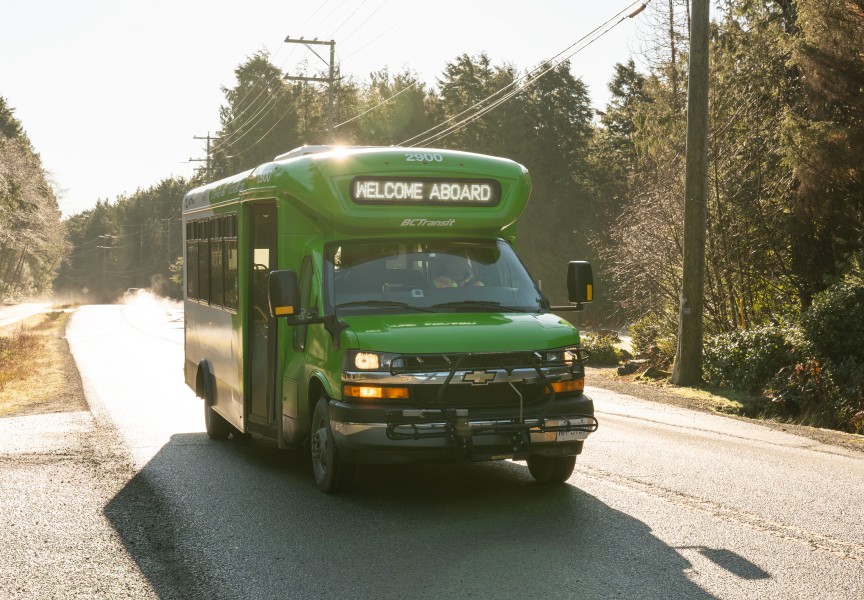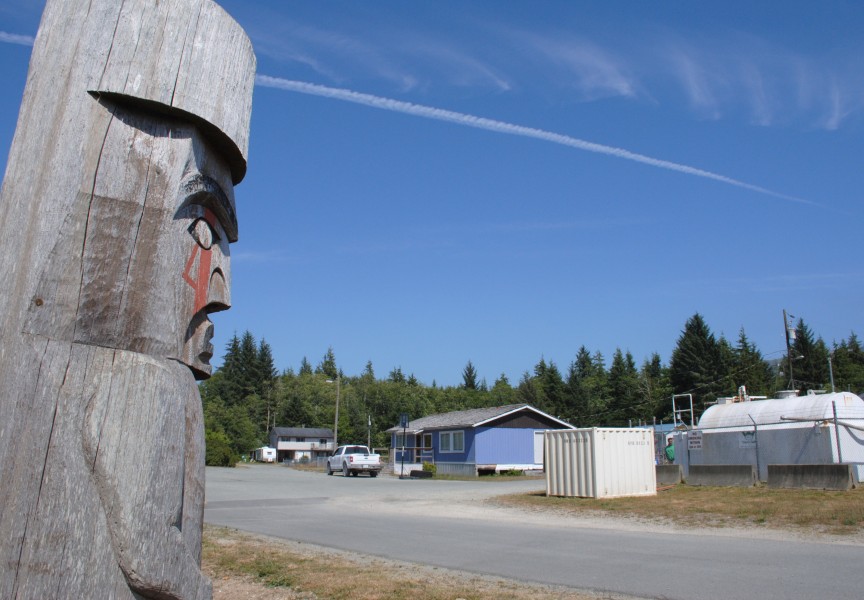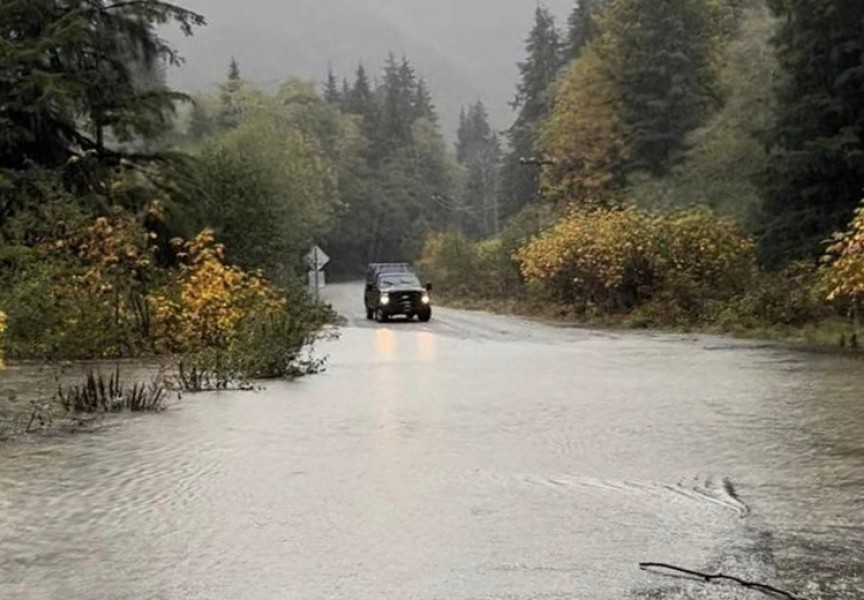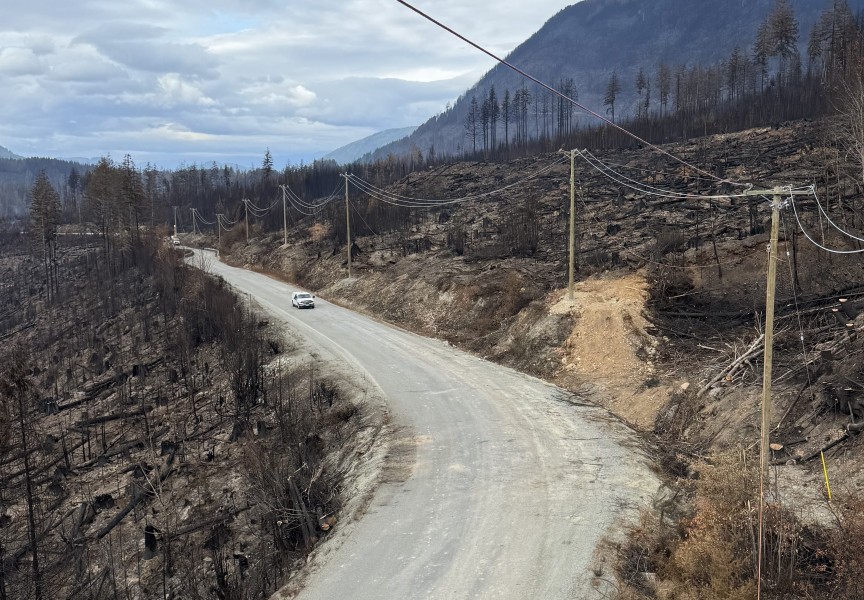After three years of work, decades of lobbying and multiple traffic fatalities the Bamfield road has been upgraded, offering a newly surfaced, safer passage to the Barkley Sound community.
The 77-kilometre project was completed in early October, bringing a smoother, more reliable road from Port Alberni to Bamfield and the Huu-ay-aht village of Anacla that can now be used by normal cars. On Oct. 10 the Huu-ay-aht hosted a celebration marking the completion of the Bamfield Main Road Reconciliation Project, a major infrastructure upgrade that is expected to open up the coastal region to tourism, while giving the First Nation’s citizens more reason to move to their home territory.
“This is an amazing day,” said Chief Councillor John Jack. “A transformation, another step in really developing our community and our lands into something that diversifies us into things that aren’t just natural resource based. This is something that can form the basis of a new type of economy for the area.”
Bamfield main has long carried a washboard-style reputation, giving travellers suspension-busting potholes in the rainy winter and blinding dust in the dry summer months. Now the road is entirely chip-sealed, an alternative to paving that uses an asphalt emulsion, resulting in a durable surface that tires easily grip to – even during heavy rains that hit the road on the day of the celebration.
The road has also been built up for a safer route, using almost 300,000 cubic metres of gravel that was all mined from pits and stock piles in the region. This is enough to cover a CFL-sized football field, with the gravel piled up 126 feet high, said Project Manager Kevin Gordon of Parsons Corp.
All of the gravel was produced by a Huu-ay-aht-owned company.
“We realized that was an issue, no gravel, so they came on board early, they produced all the gravel with no profit,” said Gordon.
Over 300 culverts were replaced or repaired over the stretch of Bamfield Main, extensive work that proved to be the biggest surprise for Gordon over the course of the project.
“Just fixing the drainage made a significant difference to the road,” he said.
By May of this year the gravel had been placed, enabling crews to begin the chip sealing on July 22. Almost four million litres of emulsion was used for the seal coats, which was first sprayed on the gravel surface, followed by 1.36 kilograms of rock chips spread over each cubic metre.
“They put on this thick layer of the emulsion, and then they lay the chip on it,” explained Gordon. “The emulsion actually draws the chips into it as it cools.”
The first layer was allowed 24 hours to dry before another was round of emulsion was sprayed on the road. The result is a chip seal surface approximately two inches thick, although more layers were put down in some parts.
“There’s three and four in some areas near the bridges,” said Gordon of the surface. “The bridges are an issue because it’s a transition.”
The road surfacing began halfway down at kilometre 36, as throughout the summer the upper half of Bamfield Main served as a detour route for Highway 4. This major route suffered ongoing delays and closures by Cameron Lake from a forest fire that started in early June.
The province cautioned travellers to use the detour route for essential trips only, but the rough passage has been a part of everyday life for residents of Bamfield, Anacla and Nitinaht Lake, the Ditidaht First Nation’s main reserve that is reached by driving the first half of Bamfield Main before branching eastward. Since it opened in the early 1970s at least nine Huu-ay-aht members have died on the road, including the late Tyee Ha’wilth Art Peters. Lobbying was ongoing, and in the 1990s the First Nation formed a tourism committee that identified the critical importance of upgrading the route. Although the road was the Huu-ay-aht’s No. 1 priority for “many, many years,” recalled former chief councillor Robert Dennis Sr., the provincial government didn’t appear to give Bamfield Main serious consideration.
“The request for assistance and support did not gain much traction over the years,” said Bob Beckett, Bamfield’s director on the Alberni-Clayoquot Regional District.
This all changed on Friday, Sept. 13, 2019. That evening a bus was headed to the Bamfield Marine Sciences Centre, carrying 45 students and two teaching assistants from the University of Victoria. While driving in the dark on a wet night, the vehicle hit a soft shoulder, veering off the road to roll down an embankment. Two 18-year-old students lost their lives in the crash.
By November former premier John Horgan travelled on the road to meet representatives in Anacla, giving a commitment to improve the passage. Preliminary studies and surveys began the next year, followed by designs and geotechnical investigations in 2021. Then construction started in June 2022, raising the surface to prevent flooding, with metal barriers installed at certain locations and hydro poles moved if necessary for the road’s widening.
The project was originally budgeted at $30.7 million, with the province putting forth $25.7 million, and the Hu-ay-aht funding the rest. But costs went over budget, tasking the First Nation to find the necessary funds to complete construction.
“The project ended up costing a lot more than we budgeted for,” said Dennis.
He noted that the Huu-ay-aht began “knocking on doors” last May, and by July it was clear that the necessary finances would be available. A final cost has not been announced, but in 2023 the province contributed another $10 million, according to a Huu-ay-aht press release.
“It was a difficult past of getting beyond why we can’t do it, and moving to a priority of how we’re going to do it,” explained Dennis. “We can’t have an unsafe road. We’re a major part of the British Columbia community.”
Bamfield Main has a fragmented ownership, with different sections owned by the provincial government, Mosaic Forest Services and C̕awak ʔqin Forestry, a joint partnership between the Huu-ay-aht and Western Forest Products. Annual maintenance costs will be shouldered by all these owners, although repairs are not expected to be as extensive now that the road has been chip sealed.
“My understanding is that the maintenance costs are likely to fall from where they’re currently at because the amount of grading that has to be done will be severely reduced,” said Jack.
“There shouldn’t be a lot of maintenance,” added Gordon. “We expect there will be the odd pothole or something where there’s a weak spot, and then it’s just addressed right away.”
In recent years the First Nation has taken a larger stake in the forestry industry, which accounts for at least 60 per cent of annual revenue for the Huu-ay-aht Group of Businesses. But hopes are brewing for increased tourism, now that Bamfield Main can be travelled by smaller cars.
The First Nation also plans to have more of its citizens move home, a growth that could comprise over half of members by the end of the decade – although this will depend on building more homes in Anacla, said Jack.
“We are aiming for a significant part of our population choosing to live in our territory by about 2030,” he said. “It could be more than half; the limiting factor is going to be our ability to build housing.”
Despite the transformation of the road, Bamfield Main is still not a provincially recognized highway, and the speed limit will remain at 60 kilometres per hour.
“Speed will be a factor in any accidents that occur, I think,” said Jack, stressing that the upgrade is for better safety and reliability, not speed. “The safety is only maintained if all of our visitors and all of our residents stick to the 60-kilometre speed limit to ensure that we minimize any future accidents that may be happening as a result of increased traffic.”
At the start of a celebratory gathering at the House of Huu-ay-aht on Oct. 10, those who lost their lives on the road were recognized, with hopes that the future will bring less tragedy on Bamfield Main.


